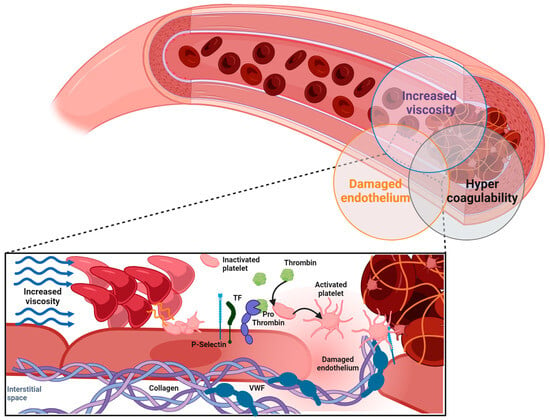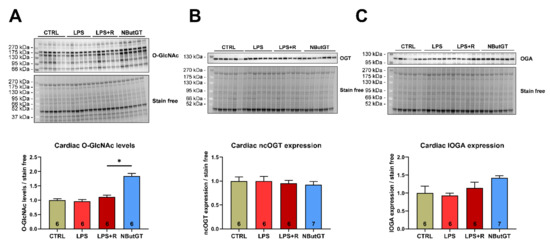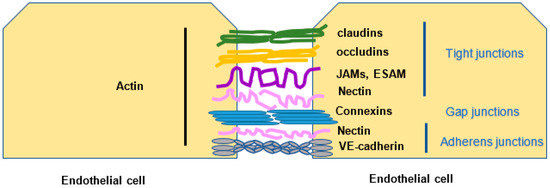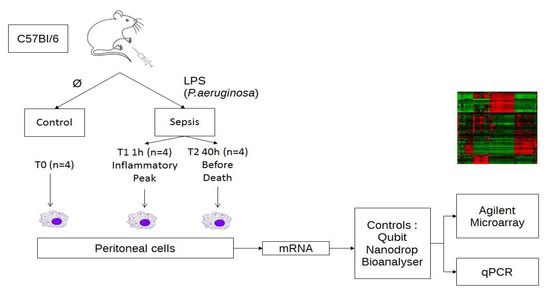State-of-the-Art Molecular Mechanisms of Hematopathology in France
Share This Topical Collection
Editors
Topical Collection Information
Dear Colleagues,
Hematopathology (or hemopathology) is the study of diseases and disorders affecting and found in blood cells, their production, and any organs and tissues involved in hematopoiesis, such as bone marrow, the spleen, and the thymus. This regional project aims to collect high-quality research articles, review articles, and communications on all aspects of research on hematopathology in France. We encourage the submission of manuscripts that provide novel and mechanistic insights and papers that report significant advances in the field.
The topics of interest for this regional collection include but are not limited to:
- Leucocytes in normal and pathological conditions: granulocytes, mononuclear cells including monocytes and lymphocytes;
- Erythrocytes or red blood cells, hereditary and acquired disorders;
- Platelets: qualitative and quantitative abnormalities;
- Coagulation and thrombosis, hemorrhagic congenital and acquired disorders, defect of antithrombotic factor, acquired prothrombotic and thrombotic pathological situations;
- Physiology of hematopoiesis, congenital and acquired disorders;
- Treatment of acute and chronic leukemia and proliferative syndrome;
- Antithrombotic therapies.
Prof. Dr. Jean-Luc Wautier
Dr. Marie-Paule Wautier
Collection Editors
Manuscript Submission Information
Manuscripts should be submitted online at www.mdpi.com by registering and logging in to this website. Once you are registered, click here to go to the submission form. Manuscripts can be submitted until the deadline. All submissions that pass pre-check are peer-reviewed. Accepted papers will be published continuously in the journal (as soon as accepted) and will be listed together on the collection website. Research articles, review articles as well as short communications are invited. For planned papers, a title and short abstract (about 250 words) can be sent to the Editorial Office for assessment.
Submitted manuscripts should not have been published previously, nor be under consideration for publication elsewhere (except conference proceedings papers). All manuscripts are thoroughly refereed through a single-blind peer-review process. A guide for authors and other relevant information for submission of manuscripts is available on the Instructions for Authors page. International Journal of Molecular Sciences is an international peer-reviewed open access semimonthly journal published by MDPI.
Please visit the Instructions for Authors page before submitting a manuscript.
There is an Article Processing Charge (APC) for publication in this
open access journal. For details about the APC please see here.
Submitted papers should be well formatted and use good English. Authors may use MDPI's
English editing service prior to publication or during author revisions.
Keywords
- red blood cell
- anemia
- bleeding
- leukemia
- multiple myeloma thrombus
- hemophilia
Published Papers (4 papers)
Open AccessReview
Red Blood Cell Contribution to Thrombosis in Polycythemia Vera and Essential Thrombocythemia
by
Julien M. P. Grenier, Wassim El Nemer and Maria De Grandis
Cited by 16 | Viewed by 7557
Abstract
Polycythemia vera (PV) and essential thrombocythemia (ET) are myeloproliferative neoplasms (MPN) characterized by clonal erythrocytosis and thrombocytosis, respectively. The main goal of therapy in PV and ET is to prevent thrombohemorrhagic complications. Despite a debated notion that red blood cells (RBCs) play a
[...] Read more.
Polycythemia vera (PV) and essential thrombocythemia (ET) are myeloproliferative neoplasms (MPN) characterized by clonal erythrocytosis and thrombocytosis, respectively. The main goal of therapy in PV and ET is to prevent thrombohemorrhagic complications. Despite a debated notion that red blood cells (RBCs) play a passive and minor role in thrombosis, there has been increasing evidence over the past decades that RBCs may play a biological and clinical role in PV and ET pathophysiology. This review summarizes the main mechanisms that suggest the involvement of PV and ET RBCs in thrombosis, including quantitative and qualitative RBC abnormalities reported in these pathologies. Among these abnormalities, we discuss increased RBC counts and hematocrit, that modulate blood rheology by increasing viscosity, as well as qualitative changes, such as deformability, aggregation, expression of adhesion proteins and phosphatidylserine and release of extracellular microvesicles. While the direct relationship between a high red cell count and thrombosis is well-known, the intrinsic defects of RBCs from PV and ET patients are new contributors that need to be investigated in depth in order to elucidate their role and pave the way for new therapeutical strategies.
Full article
►▼
Show Figures
Open AccessArticle
Beneficial Effects of O-GlcNAc Stimulation in a Young Rat Model of Sepsis: Beyond Modulation of Gene Expression
by
Thomas Dupas, Antoine Persello, Angélique Blangy-Letheule, Manon Denis, Angélique Erraud, Virginie Aillerie, Aurélia A. Leroux, Matthieu Rivière, Jacques Lebreton, Arnaud Tessier, Bertrand Rozec and Benjamin Lauzier
Cited by 10 | Viewed by 3165
Abstract
The young population, which is particularly at risk of sepsis, is, paradoxically, rarely studied. Acute stimulation of O-GlcNAcylation, a post-translational modification involved in metabolic regulation, cell survival and stress response, is beneficial in young rats with sepsis. Considering that sepsis impacts the gene
[...] Read more.
The young population, which is particularly at risk of sepsis, is, paradoxically, rarely studied. Acute stimulation of O-GlcNAcylation, a post-translational modification involved in metabolic regulation, cell survival and stress response, is beneficial in young rats with sepsis. Considering that sepsis impacts the gene expression profile and that O-GlcNAcylation is a regulator of transcription, the aims of this study are to (i) unveil beneficial mechanisms of O-GlcNAcylation and (ii) decipher the relationship between O-GlcNAcylation and transcription during sepsis. Endotoxemic challenge was induced in 28-day-old male rats using a lipopolysaccharide injection (
E. coli O111:B4, 20 mg·kg
−1) and compared to control rats (NaCl 0.9%). One hour after, rats were assigned to no therapy or fluidotherapy (NaCl 0.9%, 10 mL.kg
−1) ± NButGT (10 mg·kg
−1) to stimulate O-GlcNAc levels. Cardiac O-GlcNAcylation levels were evaluated via Western blot and gene transcription using 3′ SRP analysis. Lipopolysaccharide injection favorizes inflammatory state with the overexpression of genes involved in the NF-κB, JAK/STAT and MAPK pathways. NButGT treatment increased cardiac O-GlcNAcylation levels (
p < 0.05). Yet, the mRNA expression was not impacted two hours after fluidotherapy or NButGT treatment. In conclusion, O-GlcNAc stimulation-induced beneficial effects are not dependent on the gene expression profile at the early phase of sepsis.
Full article
►▼
Show Figures
Open AccessReview
Vascular Permeability in Diseases
by
Jean-Luc Wautier and Marie-Paule Wautier
Cited by 126 | Viewed by 16973
Abstract
Vascular permeability is a selective mechanism that maintains the exchange between vessels, tissues, and organs. The regulation was mostly studied during the nineteenth century by physiologists who defined physical laws and equations, taking blood, tissue interstitial, and oncotic pressure into account. During the
[...] Read more.
Vascular permeability is a selective mechanism that maintains the exchange between vessels, tissues, and organs. The regulation was mostly studied during the nineteenth century by physiologists who defined physical laws and equations, taking blood, tissue interstitial, and oncotic pressure into account. During the last decades, a better knowledge of vascular cell functions and blood-vessel interactions opens a new area of vascular biology. Endothelial cell receptors vascular cell adhesion molecule (VCAM), intercellular cell adhesion molecule (ICAM), vascular endothelial growth factor receptor (VEGFR-2), receptor for advanced glycation end products (RAGE), and mediators were identified and their role in homeostasis and pathological situations was described. The molecular differences of endothelial cell junctions (tight, gap, and adherens junctions) and their role in vascular permeability were characterized in different organs. The main mediators of vasomotricity and permeability, such as prostaglandins, nitric oxide (NO), prostacyclin, vascular growth factor (VEGF), and cytokines, have been demonstrated to possess major functions in steady state and pathological situations. Leukocytes were shown to adhere to endothelium and migrate during inflammatory situations and infectious diseases. Increased vascular permeability is linked to endothelium integrity. Glycocalyx, when intact, may limit cancer cell metastasis. Biological modifications of blood and tissue constituents occurring in diabetes mellitus were responsible for increased permeability and, consequently, ocular and renal complications. Vascular pressure and fluidity are major determinants of pulmonary and cerebral edema. Beside the treatment of the infectious disease, of the blood circulation dysfunction and inflammatory condition, drugs (cyclooxygenase inhibitors) and specific antibodies anti-cytokine (anti-VEGF) have been demonstrated to reduce the severity and the mortality in diseases that exhibited enhanced vascular permeability.
Full article
►▼
Show Figures
Open AccessArticle
Transcriptional Response in a Sepsis Mouse Model Reflects Transcriptional Response in Sepsis Patients
by
Florian Rosier, Nicolas Fernandez Nuñez, Magali Torres, Béatrice Loriod, Pascal Rihet and Lydie C. Pradel
Cited by 16 | Viewed by 3943
Abstract
Mortality due to sepsis remains unacceptably high, especially for septic shock patients. Murine models have been used to better understand pathophysiology mechanisms. However, the mouse model is still under debate. Herein we investigated the transcriptional response of mice injected with lipopolysaccharide (LPS) and
[...] Read more.
Mortality due to sepsis remains unacceptably high, especially for septic shock patients. Murine models have been used to better understand pathophysiology mechanisms. However, the mouse model is still under debate. Herein we investigated the transcriptional response of mice injected with lipopolysaccharide (LPS) and compared it to either human cells stimulated in vitro with LPS or to the blood cells of septic patients. We identified a molecular signature composed of 2331 genes with an FDR median of 0%. This molecular signature is highly enriched in regulated genes in peritoneal macrophages stimulated with LPS. There is significant enrichment in several inflammatory signaling pathways, and in disease terms, such as pneumonia, sepsis, systemic inflammatory response syndrome, severe sepsis, an inflammatory disorder, immune suppression, and septic shock. A significant overlap between the genes upregulated in mouse and human cells stimulated with LPS has been demonstrated. Finally, genes upregulated in mouse cells stimulated with LPS are enriched in genes upregulated in human cells stimulated in vitro and in septic patients, who are at high risk of death. Our results support the hypothesis of common molecular and cellular mechanisms between mouse and human sepsis.
Full article
►▼
Show Figures











